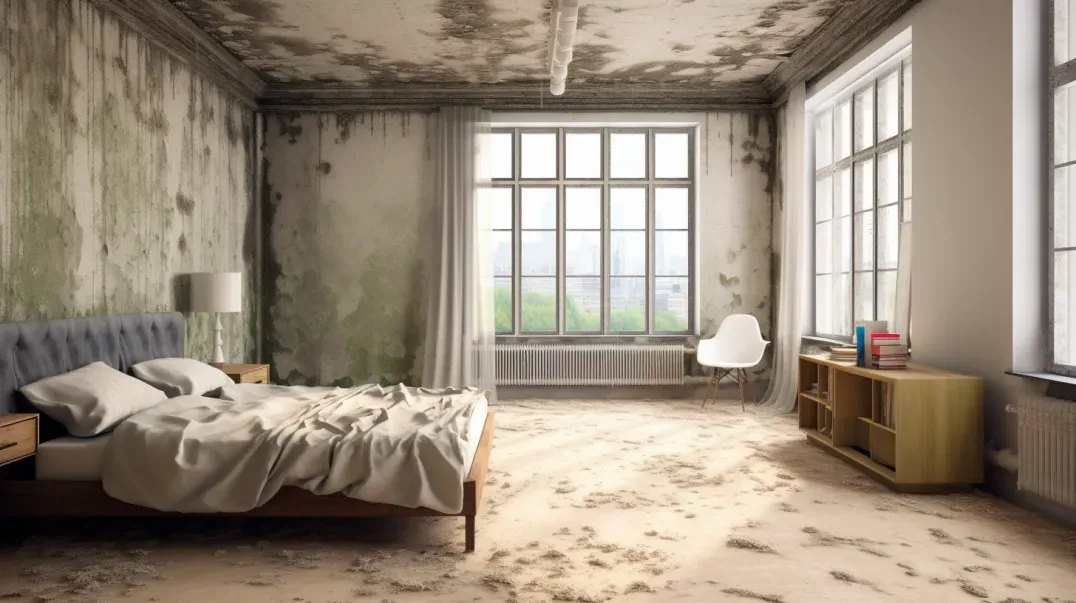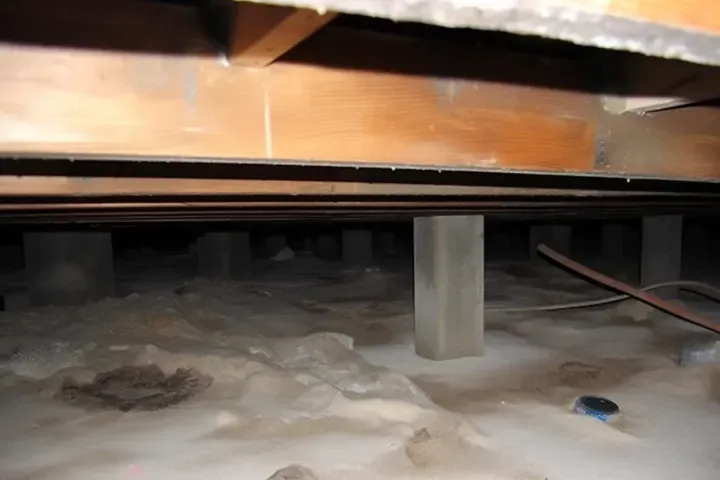Mold Allergy Symptoms and Prevention
Mold allergies are a common yet often overlooked health concern affecting a significant portion of the population. This blog aims to shed light on the prevalence of mold allergies and the importance of recognizing their symptoms for better health and well-being. Mold, a ubiquitous presence in both outdoor and indoor environments, can trigger allergic reactions in sensitive individuals, leading to a range of symptoms that can impact daily life.
Understanding mold allergies is crucial, not just for those who suffer from them, but also for anyone looking to maintain a healthy living environment. Mold spores, which are the root cause of these allergies, can easily find their way into homes, thriving in damp, humid conditions. This blog will delve into the specifics of mold allergies, including how they manifest, their common triggers, and the health risks they pose.
Moreover, we will explore the importance of recognizing the symptoms of mold allergies. Symptoms can range from mild to severe and may include sneezing, runny or stuffy nose, itchy throat or eyes, and in more severe cases, asthma-like symptoms. Early recognition of these symptoms is key to managing and mitigating the effects of mold allergies.
In addition to understanding and recognizing symptoms, this blog will also highlight effective strategies for preventing mold growth and exposure. From maintaining optimal humidity levels in your home to regular cleaning and the use of air purifiers, we will provide practical tips and measures that can be implemented to create a healthier, mold-free environment.
Join us as we navigate the intricacies of mold allergies, offering insights and advice on how to recognize, manage, and prevent these common yet impactful allergies. Whether you are directly affected by mold allergies or simply aiming to maintain a healthy home, this blog will equip you with the knowledge and tools you need.
Understanding Mold and Its Allergens
Mold is a common environmental element that can have significant health implications, particularly for those with sensitivities or allergies to its spores. This section of the blog aims to provide a foundational understanding of what mold is, including its various types and how it produces allergens, as well as an explanation of how mold allergies work in the human body.
What is Mold?
Mold is a type of fungus that plays a crucial role in nature by breaking down dead organic material. However, when it grows in indoor environments, it can become a health concern. Here’s some basic information about mold:
- Characteristics: Mold grows from tiny spores that float in the air. It thrives in moist, warm environments and can be found both indoors and outdoors.
- Types of Mold: There are thousands of species of mold, but some common types found in homes include Aspergillus, Penicillium, Cladosporium, and Stachybotrys (often known as black mold).
- Production of Allergens: Mold produces allergens, which are substances that can cause allergic reactions in some people. These allergens are typically parts of the mold cells or spores themselves.
How Mold Allergies Work
Mold allergies occur when an individual’s immune system reacts to mold spores or mold cells. Here’s an explanation of this immune response:
- Immune System Reaction: For people with mold allergies, exposure to mold spores triggers an immune response. The body mistakenly identifies these spores as harmful invaders and releases antibodies to attack them.
- Release of Histamines: The interaction of antibodies with mold allergens leads to the release of histamines in the body. Histamines are chemicals that cause allergy symptoms.
- Symptoms of Mold Allergies: Common symptoms include sneezing, runny or stuffy nose, itchy eyes, throat, or skin, and coughing. In some cases, mold allergies can exacerbate asthma symptoms, leading to increased difficulty in breathing.
Understanding mold and its allergens is essential for recognizing and managing mold allergies. By being informed about the nature of mold and how allergic reactions to it occur, individuals can take appropriate steps to reduce exposure and manage symptoms, contributing to better overall health and well-being.
Common Symptoms of Mold Allergies
Mold allergies can manifest in various ways, affecting different parts of the body, primarily the respiratory system, skin, and eyes. This section of the blog aims to detail the common symptoms associated with mold allergies, helping readers to identify and understand these reactions.
Respiratory Symptoms
Mold allergies often trigger a range of respiratory symptoms, as the body reacts to inhaling mold spores. These symptoms can range from mild to severe, depending on individual sensitivities and the level of exposure. Common respiratory symptoms include:
- Sneezing: Frequent sneezing is a common reaction to mold allergens, as the body attempts to expel these irritants from the nasal passages.
- Coughing and Wheezing: Mold exposure can lead to a persistent cough or wheezing, as the respiratory system responds to the perceived threat.
- Nasal Congestion and Runny Nose: Allergies to mold can cause the nasal passages to become inflamed and congested, leading to a stuffy or runny nose.
Skin and Eye Reactions
In addition to respiratory symptoms, mold allergies can also affect the skin and eyes. These reactions are the body's response to direct contact with mold allergens. Key symptoms include:
- Itchy Eyes and Redness: Exposure to mold can cause the eyes to become itchy, watery, and red, a condition often referred to as allergic conjunctivitis.
- Skin Rashes and Irritation: Some individuals may experience skin reactions to mold exposure, which can manifest as rashes, itching, or irritation. These skin symptoms occur due to the direct contact of mold allergens with the skin.
Recognizing these symptoms is crucial for individuals who may be suffering from mold allergies. Understanding the link between these symptoms and mold exposure can help in seeking appropriate treatment and taking steps to reduce exposure to mold allergens. It's important to note that while these symptoms can be indicative of mold allergies, they can also be caused by other allergens or health conditions, so consulting with a healthcare professional for an accurate diagnosis is recommended.
Identifying and Reducing Mold Exposure
Mold exposure in indoor environments can pose health risks and affect the quality of life. This section of the blog is dedicated to helping readers identify common sources of indoor mold in homes and workplaces, and providing practical strategies to reduce mold exposure and maintain a healthier living space.
Common Sources of Indoor Mold
Understanding where mold is most likely to grow is the first step in managing its presence. Here are some typical sources of indoor mold:
- Bathrooms and Kitchens: These areas are prone to mold due to high humidity levels from showering, cooking, and washing.
- Basements and Crawl Spaces: These lower-level areas often have poor ventilation and can be susceptible to dampness and water seepage, making them common sites for mold growth.
- Windows and Door Frames: Condensation on windows and around door frames can provide the moisture needed for mold to thrive.
- HVAC Systems: Air conditioning and heating systems can harbor mold if not properly maintained, spreading spores throughout the home.
- Leaking Pipes and Roofs: Any area with water damage from leaks is a potential breeding ground for mold.
Strategies to Reduce Mold Exposure
Reducing mold exposure involves a combination of moisture control, regular cleaning, and maintenance. Here are practical tips to minimize mold presence:
- Control Humidity: Use dehumidifiers and air conditioners to keep indoor humidity levels below 50%. Ventilate bathrooms and kitchens by using exhaust fans.
- Fix Leaks Promptly: Repair any leaking pipes, roofs, or windows as soon as they are discovered to prevent moisture accumulation.
- Regular Cleaning: Clean bathrooms, kitchens, and other mold-prone areas regularly. Use mold-killing products in bathrooms and other areas prone to mold.
- Proper Ventilation: Ensure that your home is well-ventilated. Use fans or open windows to circulate air and reduce moisture.
- Inspect and Maintain HVAC Systems: Regularly clean and maintain HVAC systems to prevent mold from growing and being distributed by the system.
By identifying common sources of mold and implementing these strategies to reduce exposure, homeowners and occupants can significantly mitigate the risks associated with mold, creating a safer and healthier indoor environment.
Preventative Measures Against Mold Allergies
For individuals suffering from mold allergies, taking proactive steps to minimize exposure is crucial. This section of the blog focuses on effective environmental control and cleanliness practices to maintain a mold-free environment, as well as personal protective measures that individuals can adopt to reduce the risks associated with mold allergies.
Environmental Control and Cleanliness
Creating and maintaining an environment that discourages mold growth is essential in managing mold allergies. Here are some recommendations:
- Regular Cleaning and Vacuuming: Regularly clean your home, especially areas prone to mold growth like bathrooms, kitchens, and basements. Vacuuming with a HEPA filter can help remove mold spores from floors and carpets.
- Using Air Purifiers and Dehumidifiers: Air purifiers equipped with HEPA filters can capture mold spores from the air. Dehumidifiers help reduce moisture levels in your home, making it less hospitable for mold growth. Aim to keep indoor humidity below 50%.
Personal Protective Measures
In addition to environmental controls, adopting certain personal habits can further reduce the risk of mold allergy symptoms. Here are some practical tips:
- Wearing Masks While Cleaning: When cleaning areas with mold or mold-prone areas, wear a mask to prevent inhaling mold spores. N95 respirators or masks with similar filtration capabilities are recommended.
- Showering After Outdoor Activities: Mold spores can cling to your hair, skin, and clothing. Showering after spending time outdoors can help remove these spores and reduce the chance of bringing them into your home environment.
By implementing these environmental control measures and personal protective practices, individuals with mold allergies can significantly reduce their exposure to mold spores, thereby managing their symptoms more effectively and improving their overall quality of life.
Diagnosis and Treatment of Mold Allergies
Mold allergies can significantly impact the quality of life, making diagnosis and treatment crucial for those affected. This section of the blog aims to provide guidance on when to seek professional medical advice for mold allergies and introduces common treatment options available to manage this condition.
When to See a Doctor
Recognizing when to consult a doctor for mold allergies is key to getting proper treatment. Here are some guidelines:
- Persistent Symptoms: If you experience ongoing or worsening allergy symptoms such as sneezing, nasal congestion, itchy eyes, or respiratory issues, it’s time to see a doctor.
- Symptoms Interfering with Daily Life: When allergy symptoms become severe enough to disrupt your daily activities, sleep, or work, professional medical advice is necessary.
- Over-the-Counter Medications Not Effective: If symptoms do not improve with over-the-counter allergy medications, a doctor can provide a more targeted treatment plan.
- Asthma or Severe Reactions: Individuals with asthma or those experiencing severe allergic reactions, such as difficulty breathing, should seek medical attention promptly.
Treatment Options for Mold Allergies
There are several treatment options available for managing mold allergies. Common treatments include:
- Medications: Antihistamines can help relieve sneezing, itching, and runny nose, while nasal corticosteroids are effective for treating nasal symptoms. Decongestants may also be used for short-term relief.
- Allergy Shots (Immunotherapy): For long-term treatment, allergy shots can be effective. This involves regular injections of purified allergen extracts, gradually increasing doses over time to build tolerance.
- Nasal Lavage: Using a saline solution to rinse the nasal passages can help relieve nasal symptoms associated with mold allergies.
- Environmental Control: While not a direct treatment, reducing exposure to mold by controlling humidity and keeping living spaces clean is an important part of managing mold allergies.
Understanding the options for diagnosis and treatment of mold allergies is essential for those affected. Seeking timely medical advice and following an appropriate treatment plan can greatly alleviate symptoms and improve overall well-being.
FAQs
Contact Lowcountry Crawlspaces Today!
Lowcountry Crawlspaces will do everything we can to ensure your experience with us is excellent.
Request A FREE Estimate
CHECKOUT RECENT POST



Schedule Your FREE Crawl Space Evaluation Today
There Is No Crawl Space Job We Can’t Fix!




